2009 TRIP TO CENTRAL AMERICA
2009 February and early March trip to Central America. This trip started with a 10 day group tour of Guatamala with a tour group
called Caravan. Details of the Guatamala trip itenerary can be found at www.caravan.com. There are a few more
pictures from Guatamala than the other countries as it is easier to take pictures when you are on a tour rather than traveling on your own on
a bus. We took a lot of pictures out of the bus in the other countries but not very many turned out.
On February 13th Edith and I began traveling on our own going south through El Salvador, Honduras, Nicaragua,
Costa Rica and Panama. Our trip was cut short on March 8th in Volcan, Panama when we got word via e-mail that my mother Helen Gray
had passed away at the age of 93 in her sleep a few hours before. Edith and I want to thank Phil N5BEK/TI& and his wife
Carol, Louis HP3XUG and his wife Yari and Jay HP3AK for helping us in many ways and doing so much to show us life in
Central America as locals!
If you want you can read the dailyTRAVELOGUE you will get a lot more details on the trip.
E-mail one travelogue sent E-Mail one
E-mail two travelogue sent E-Mail two
E-mail three travelogue sent E-Mail three
E-mail four travelogue sent E-Mail four
E-mail five travelogue sent E-Mail five
E-mail six travelogue sent E-Mail six
E-mail seven travelogue sent E-Mail seven
E-mail eight travelogue sent E-Mail eight
E-mail nine travelogue sent E-Mail nine
Double click on thumbnail to get a larger picture.

View of Guatamala City which is about 5000 feet elevation in the jungle. The temperature is very pleasant the year
around
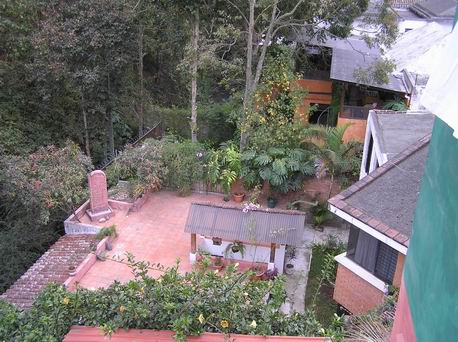
View of the jungle in Guatemala City our of our hotel back window.
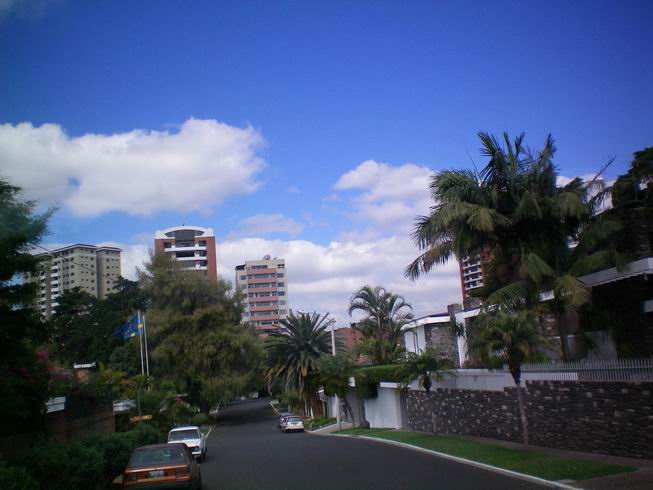
Modern Guatamala City, Guatamala.
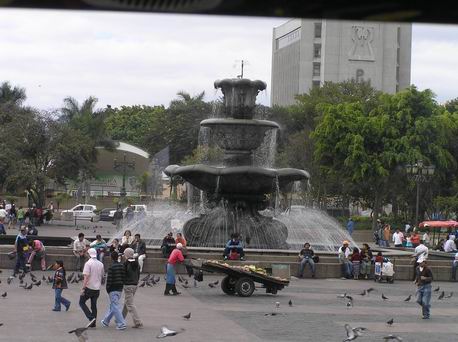
Main plaza Guatemala City
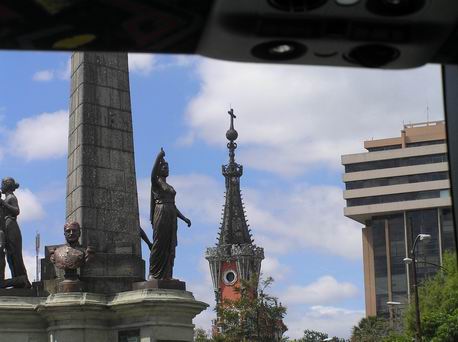
Guatemala City.
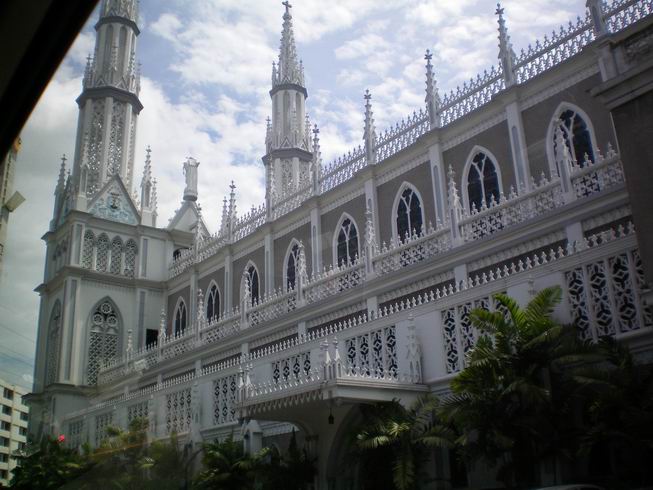
Guatemala City old section.
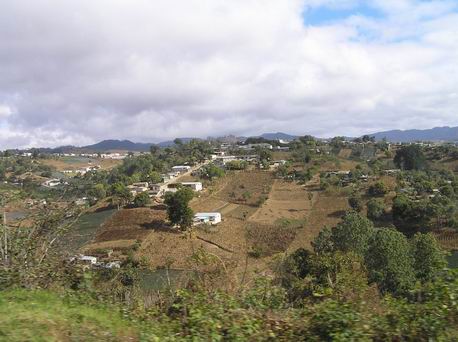
Mountains west of Guatemala City on Pan American Highway.
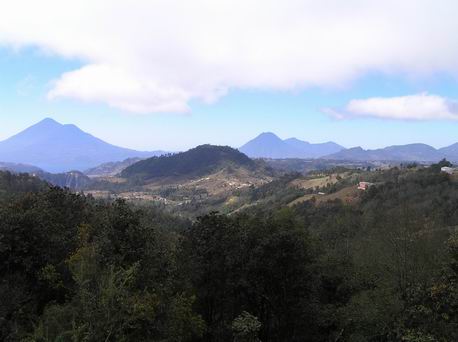
View of Lake Atitlan in distance.
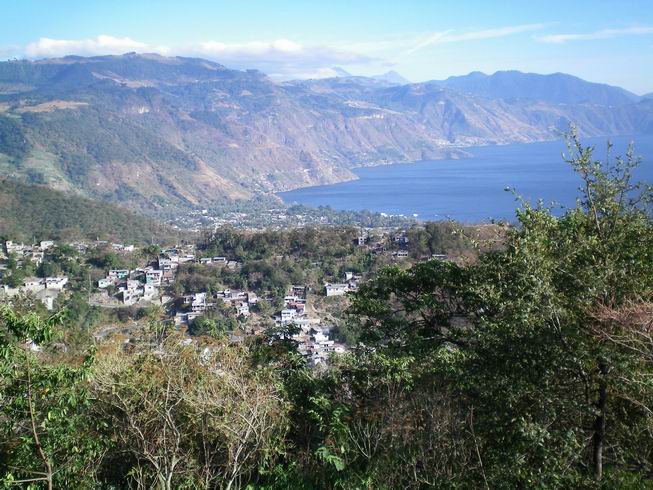
Lake Atitlan.
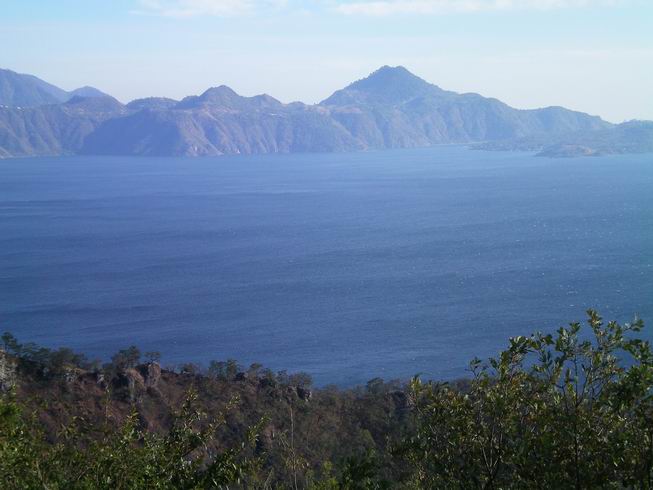
On our boat on Lake Atitlan.
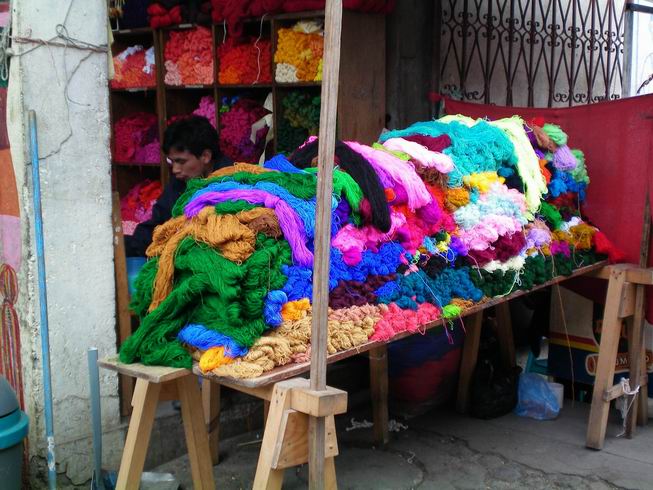
This market place in Chichicastenanago, Guatemala has operated continuously for over a thousand years. It is
famous for its wooden dance masks and hand-woven huipiles(blouses) and colorful fabrics.
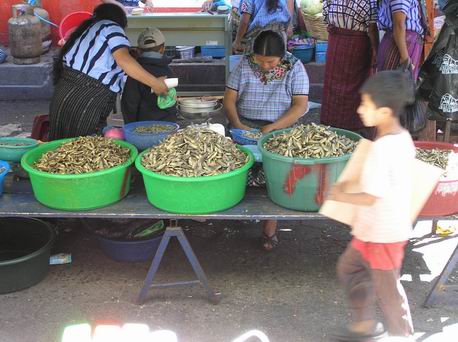
Dried fish in the market.
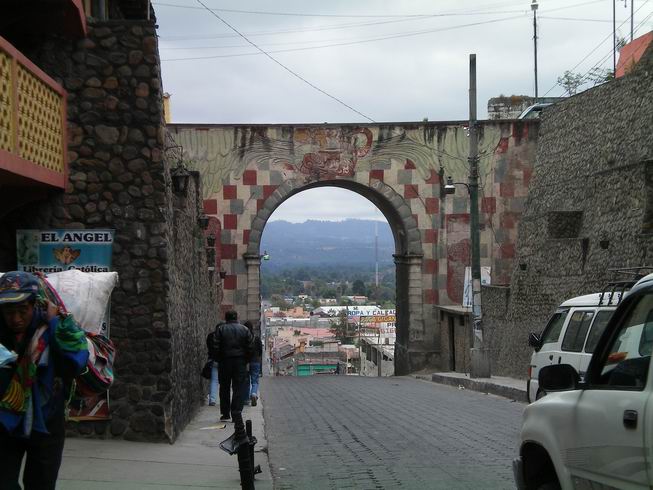
Arch in Chichcastenanago.
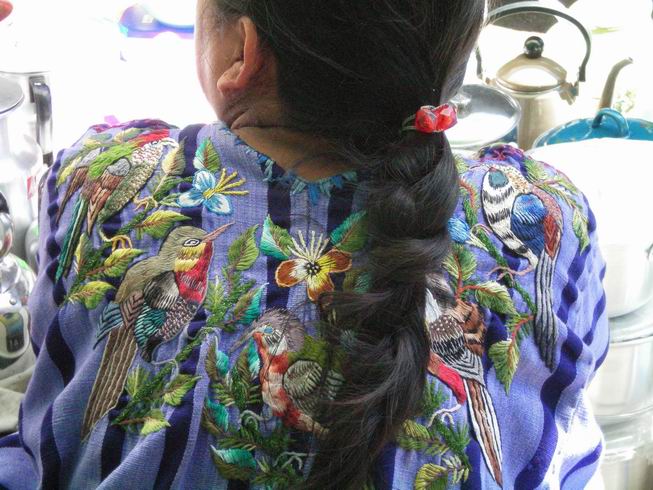
Famous embroidry work of Chichicastenanago.
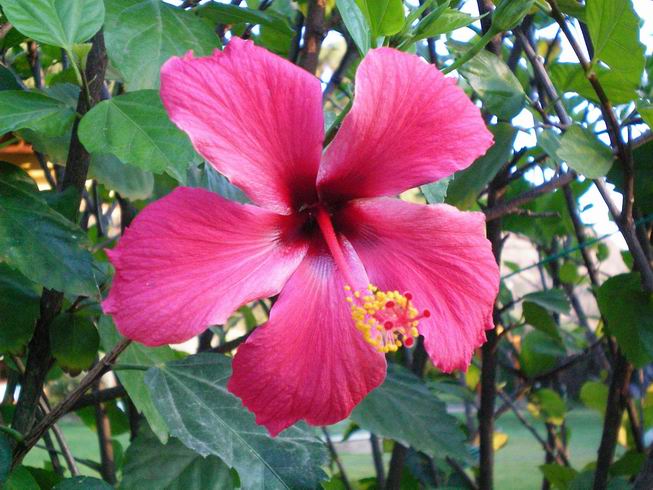
Locally called Passion flower at Panajachel Lake Atitlan area.

Locally called Bottle Brush flower at Panajachel Lake3 Atitlan area.
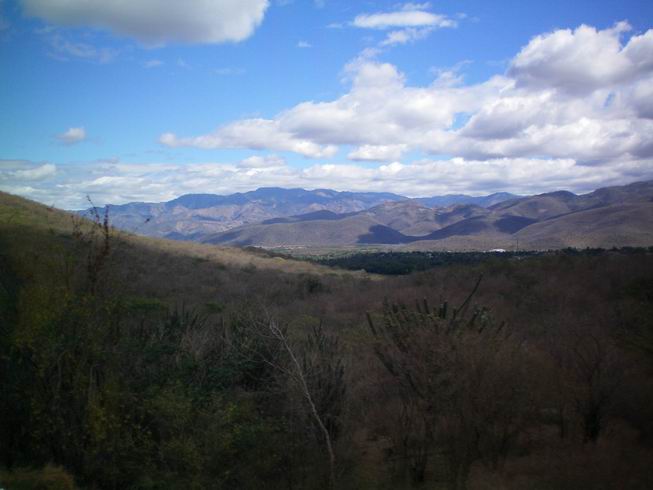
North of Guatemala City it is not as wet with agriculture along the rivers with irrigation. This was taken
out of the bus window so the quality of the photo is not perfect but it shows a different landscape from elsewhere
in Guatelmala.

Cemetary in Guatemala.
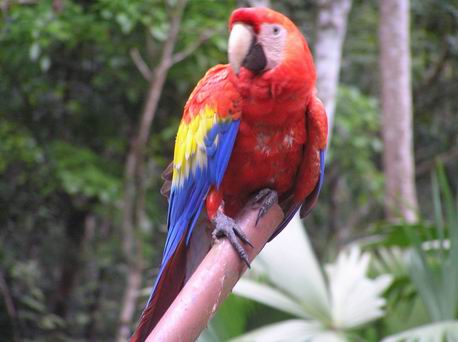
Scarlet Macaw in Honduras at the Mayan Copan site in the wild but they do feed them so they stick around.
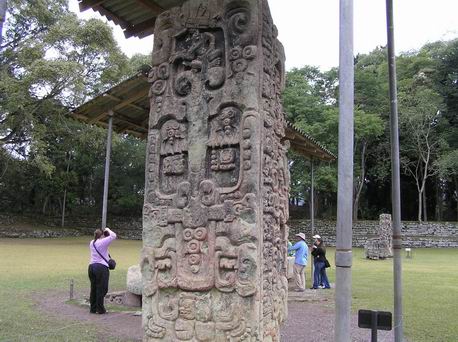
Stelae at Copan.
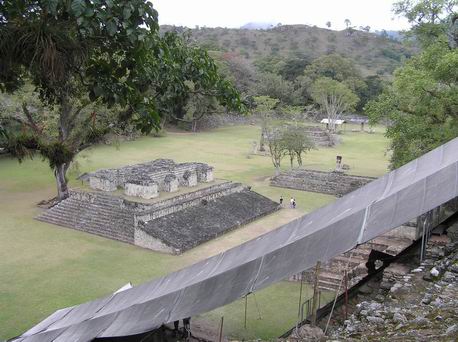
Copan's Great Plaza, in foreground is the hieroglyphic stairway where the worlds longest Maya text, with over
a thousand glyphs, is carved on 63 stone steps.
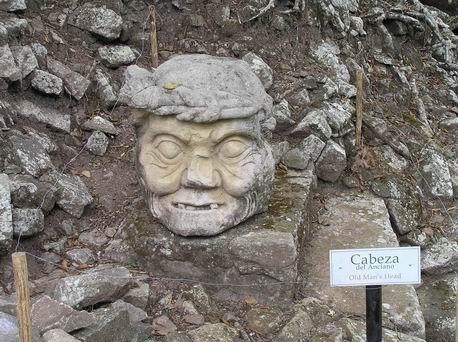
Copan carved face.
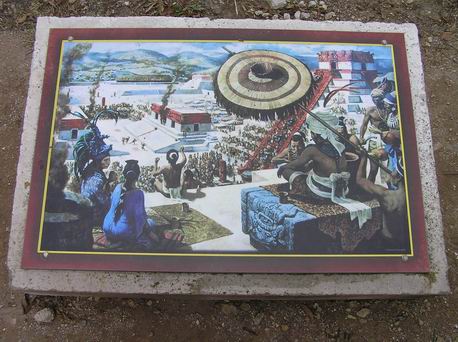
What it looked like when Copan was at its peak.
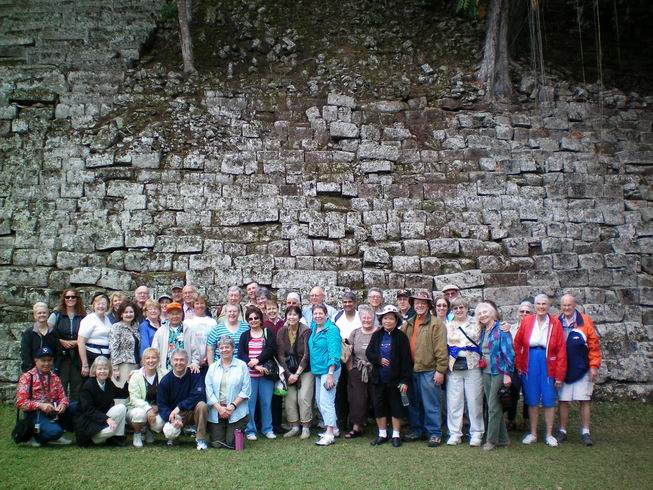
Members of our 10 day Caravan tour group. Without a doubt the best tour group we have ever been a part of,
everybody was always on time, no complaining and everyone was friendly, visited with everyone and helped each other.
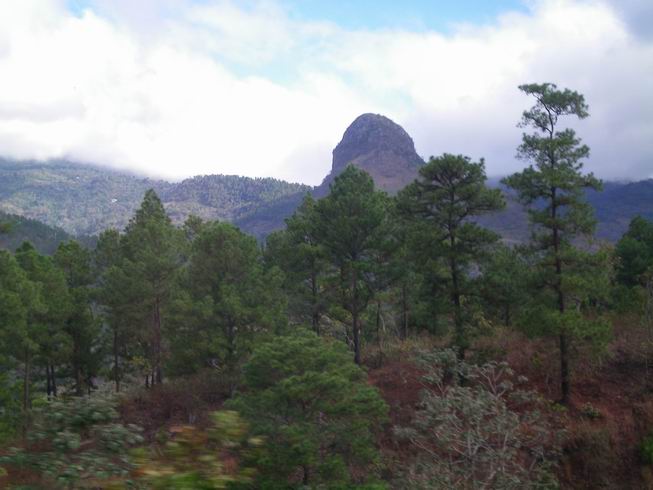
In Honduras near the Guatemala border, it was a higher elevation and more rainfall. A little loss of quality
out the bus window but shows a different landscape.
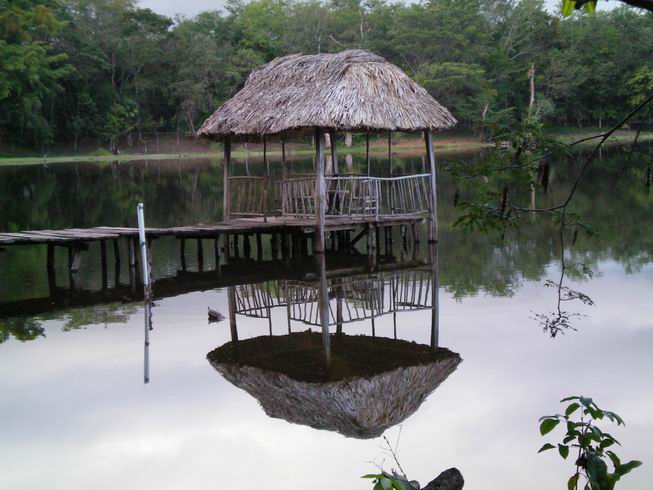
Petenchel, Guatemala, Eco Lodge about 60 km from Tikal Mayan site.
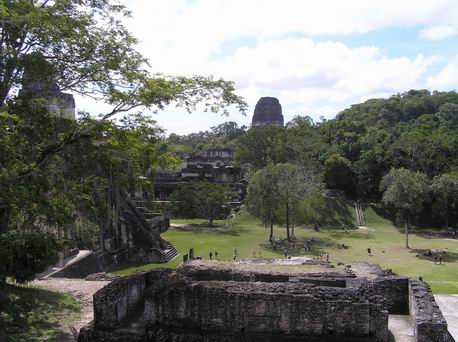
Tikal the Mayan site with the highest temples. We have seen all the great Mayan sites and we would rank it
number three. We think Palanque is the best with Chichen Itza and Tikal about same but it is a matter of personal
opinion. You can check out the pictures on the Mexico links on this web page. Copan is not bad as well as Uxmal.
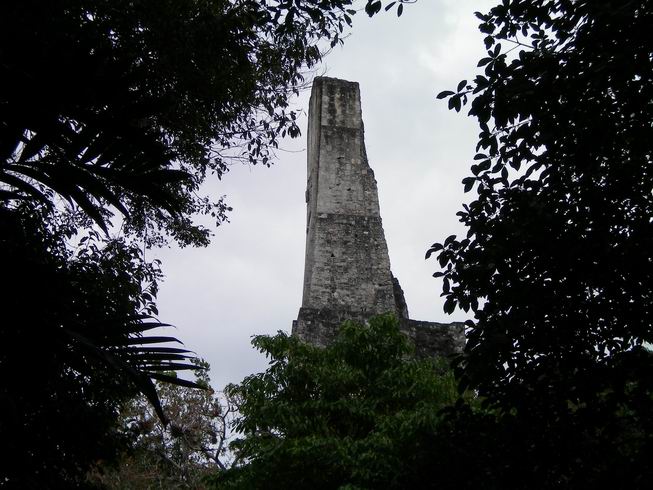
How did they get these so high???
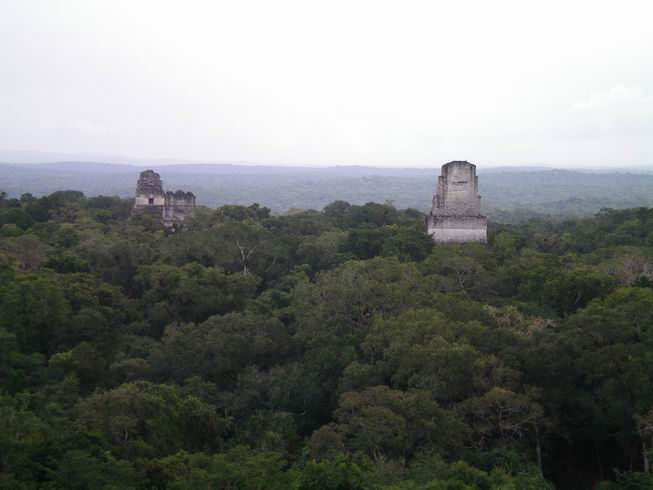
Tikal is over quite a large area in the jungle. Of course when it was lived in it was all clear and would
of had much more of a visual impact.
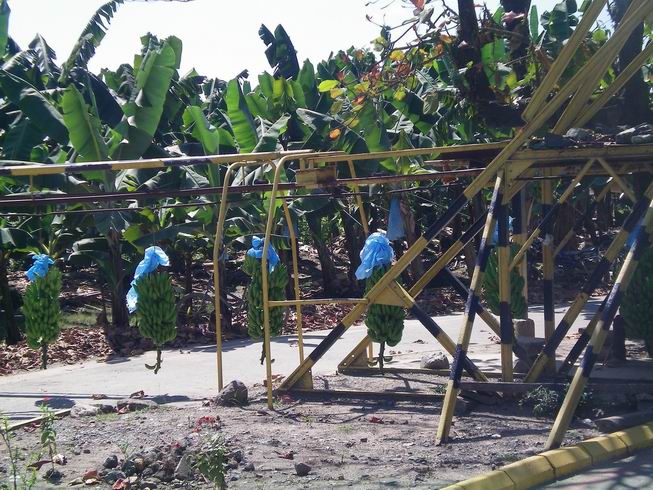
This mechanized carrier actually crossed the road and we had to stop for it.
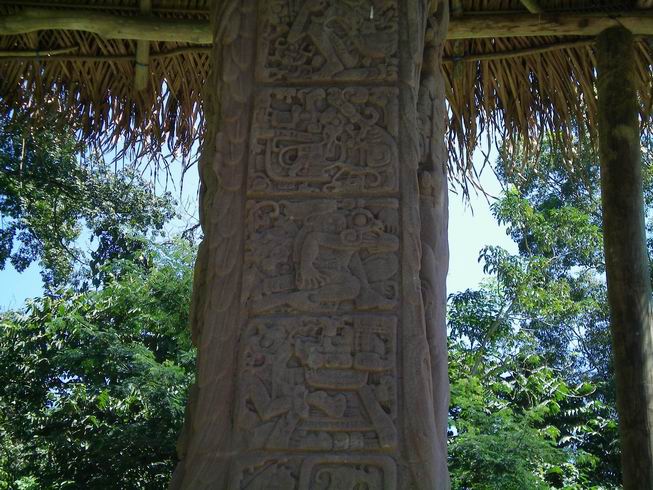
The world largest stelae at Quirigua. This is where a lot of the understanding of the Mayan calendar came
from and here is where the ending date of the Mayan calendar is found.
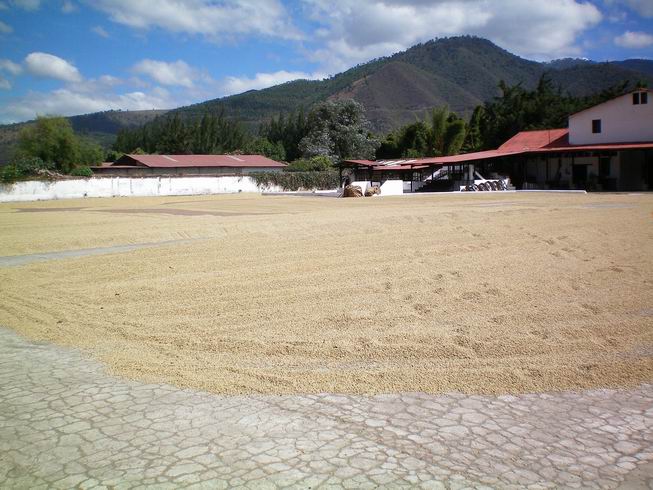
Coffee bean drying at the Antigua coffee farm. Antigua is considered the best preserved colonial city in Central America.
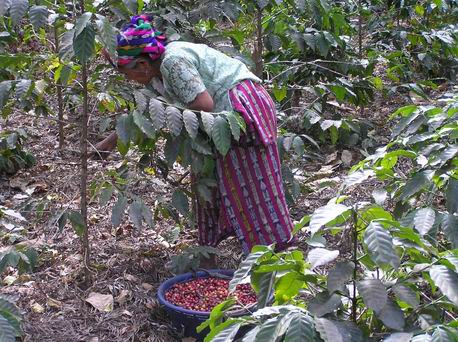
Picking coffee beans at the Antigua coffee farm.
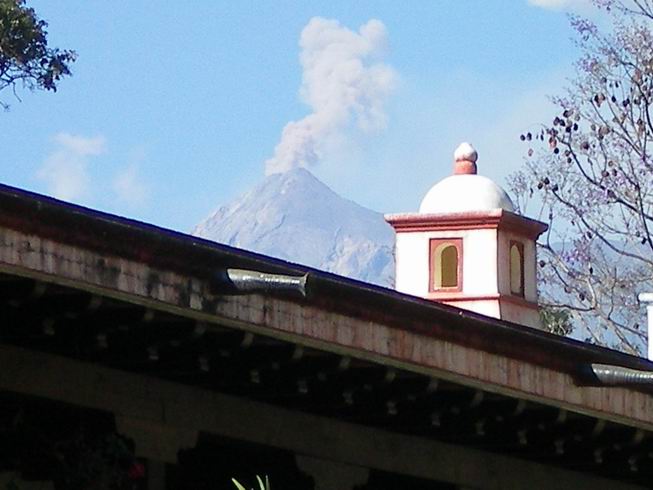
Volcano showing a bit of activity at Antigua.
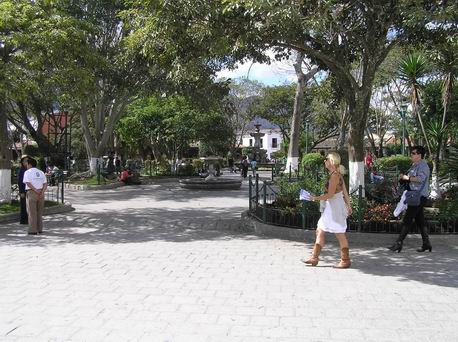
Main Plaza in Antigua. We met a number of Americans who live here gathered at the Plaza. One was Bill Shetz
the Adjutant for the America Legion for Cental America and Mexico who has lived here for about 10 years. Here in
Antigua they feed 300 kids breakfast every week day morning and sponsor 14 college schlorships and have a library
of 30,000 books. He was very helpful in regards to travel southward to Panama using the TICA bus. He had lots of
interesting stories about life in Antigua. If you do a search on the web he has posted lots of accurate, helpful
information on living in Guatemala.
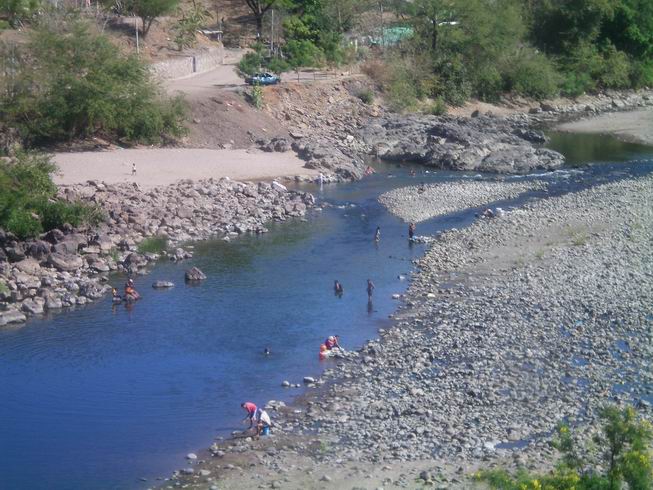
Edith and I are now on our own. Caravan bus driver Fernando dropped us of at TICA BUS rather than the airport
which says a lot about how good Caravan is. If you read the travelgues and e-mails you will learn about bus travel
in Central America. TICA is not a bad way to go if you are concerned about traveling in El Salvador and Nicaragua
as they have there own secure hotels. Actually in our opinion it is quite safe to travel in all of Central America.
The exception would be a some areas of the big cities but that is true of a lot of places in the USA and around the
world so in the big towns take the official taxi's and know your addresses and have phone numbers as all the taxi
drivers all seem to have cell phones and can call where you want to get to. I believe this is the border between
Guatemala and El Salvador. El Salvador is a very modern country, with great roads, the US dollar is the currency
used. We were going to spend some time here on our way back north but since we got called home it did not happen.
Anyway we were impressed with El Salvador. There are some great coast locations on the Pacific side not to far from
San Salvador but you probably want to be there during the week days and not real close to avoid large week end crowds
out of the city. A Canadian who just came from there told us of great beaches, surfing and cheap sea food and
reasonable priced lodging.
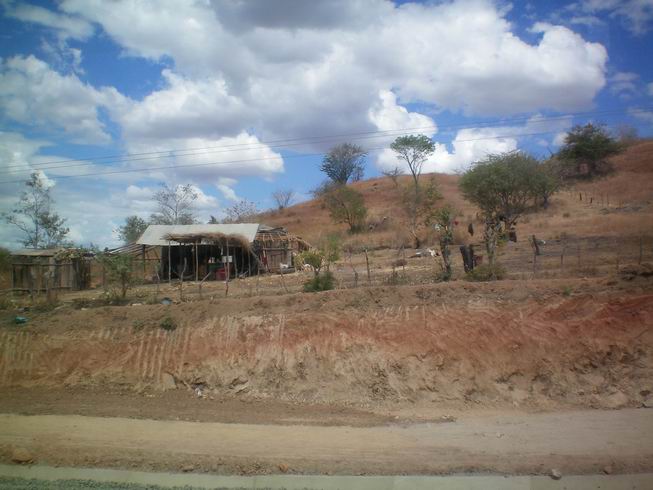
Things were not as prosperous in Honduras and Nicaragua but economically things are on the move in these two
countries. This scene is actually in Nicaragua. I think in the rural areas it was a bit poorer in Nicaragua but
in the cities it seemed better but again I would say it appeared a bit poorer in Nicaragua. Grenada and the large
Lake Nicaragua with the islands make for interesting places to visit. Again we did not get back and we were hurrying
south on our way down to get to Costa Rica to get our teeth fixed and to get to the Panama Canal.
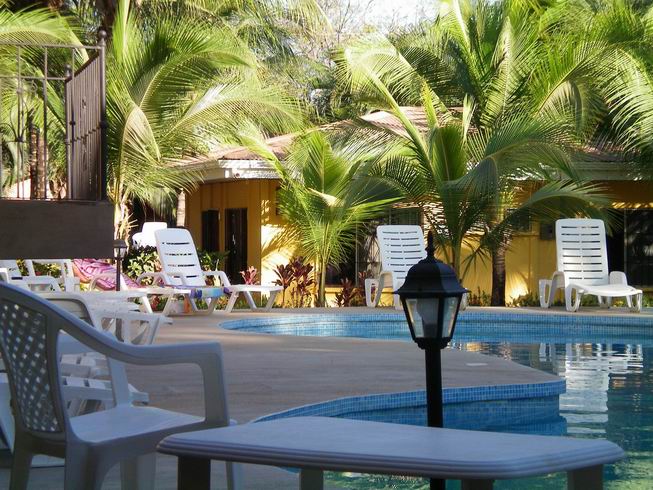
Hotel Isolina at Potrero Beach on the Northwest Pacific coast of Costa Rica. We were not used to hot weather
so 95 degrees dry heat seemed very hot to us. We did a lot of walking on the beach, used the pool and had great visits
with Phil N5BEK/TI7 and his wife Carol. She lined us up with a great dentest and we got a bridge down for 1/3 of the
cost of here in Salem. We eat out all the time and found prices about like in the USA but other things like groceries
we found very high priced.
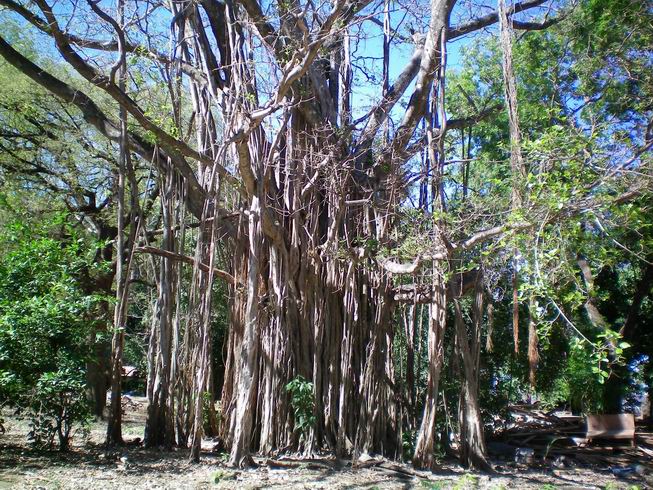
Banyan type tree just off the beach on a short cut path from Phil and Carols to the restaurant.
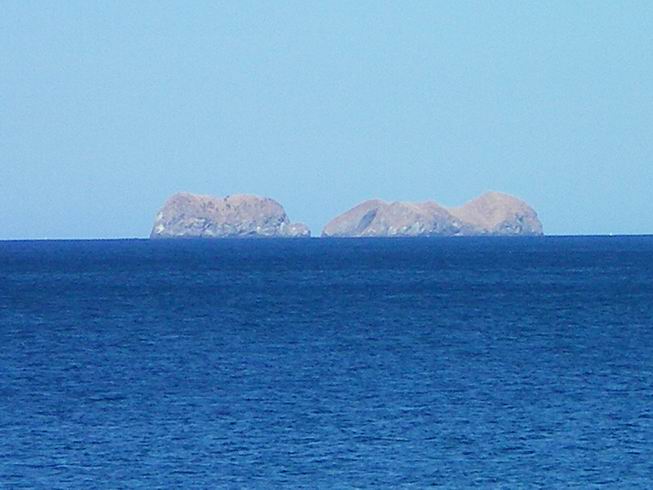
Potrero Bay

A permanent resident in our lodging. They can move fast! He like to hide in the AC unit when the light came
on.
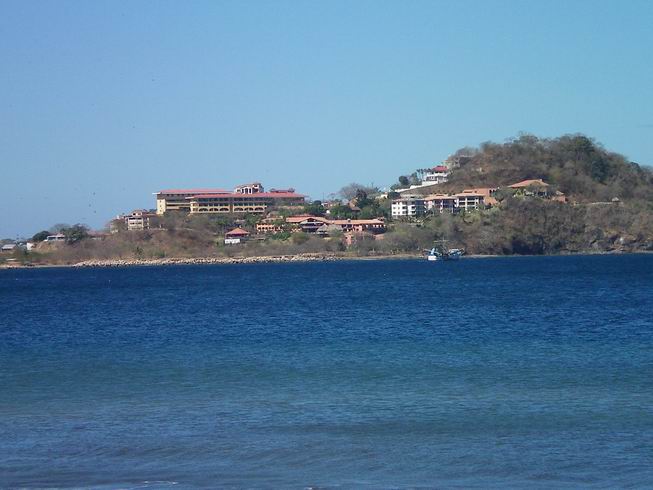
The Flamingo Beach Resort. It was actually about 2.5 miles away but looked much closer across the bay. We
used the ATM machine there.
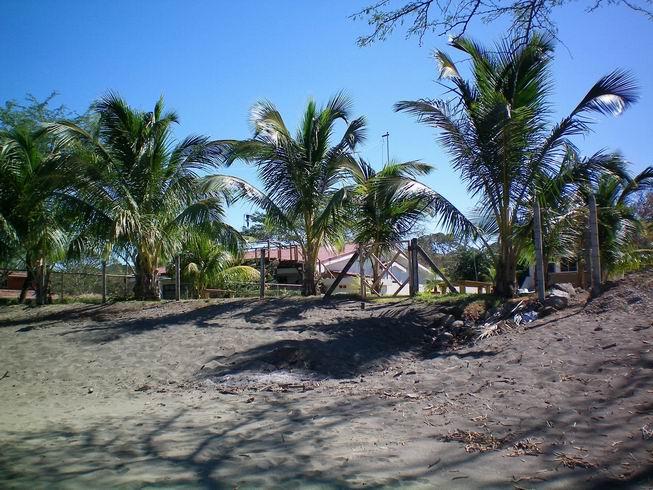
Here is Phil N5BEK/TI7 and Carol's house on the beach. They have lived full time in Costa Rica for nearly
3 years. They have come to the area for about 10 years. They were so helpful to use in so many ways with hauling
us to the dentist, great visits, a wealth of information on living in Costa Rica, showing us the area and great
places to eat.

Phil at his station N5BEK/TI7. I got to operate W0SD/TI7 for a little while. The propagation is amazingly
good from there.
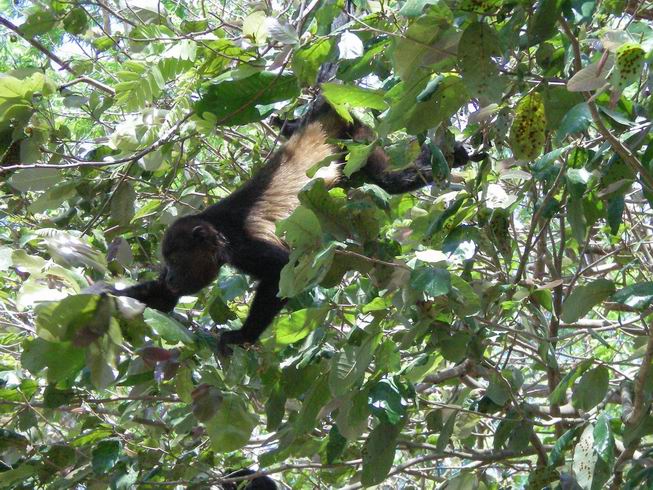
We seen Howler Monkeys in a lot of countries. They really make a lot of noise at times and you can hear them
from a long ways away. It seems it is very hard to get a good picture as they are usually high in the tree and/or
hide in the foliage. The other problem is you are pointing your camera into the sky and the camera reacts to the
bright sky and you get a dark picture of the monkey. Here is a very good picture. It is amazing how much they use
there tail to keep from falling. There diet is mainly of leaves on certain trees. It is a very good idea to be
careful taking monkey pictures as they are notorious for doing you know what on you!
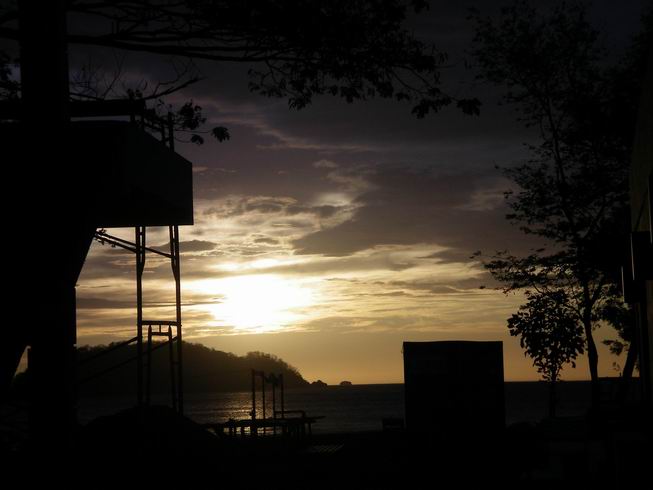
A great sunset on Potrero Beach.
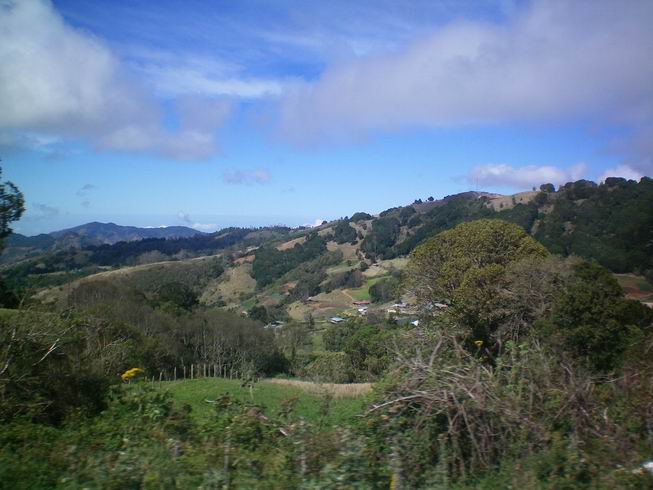
Scenery northwest of San Jose on the Pan American Highway.
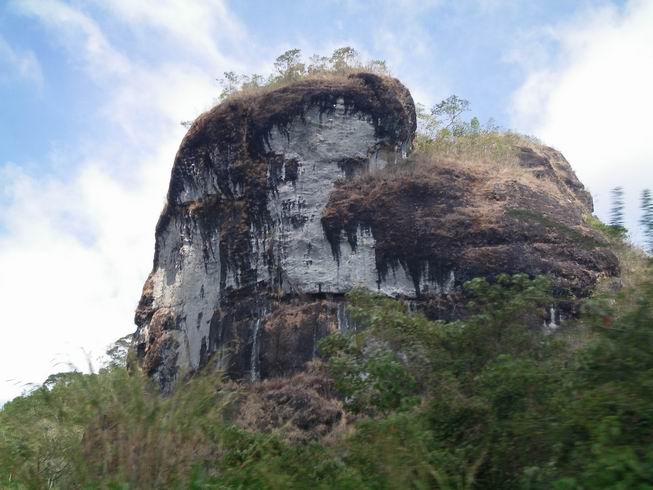
There is some awesome mountain scenery south of San Jose on the Pan American Highway heading toward Panama.
Some of the mountains are in what are called Cloud Forests. There are areas like this north of San Jose around St.
Elena which we were going to visit on the way back before we got called home.
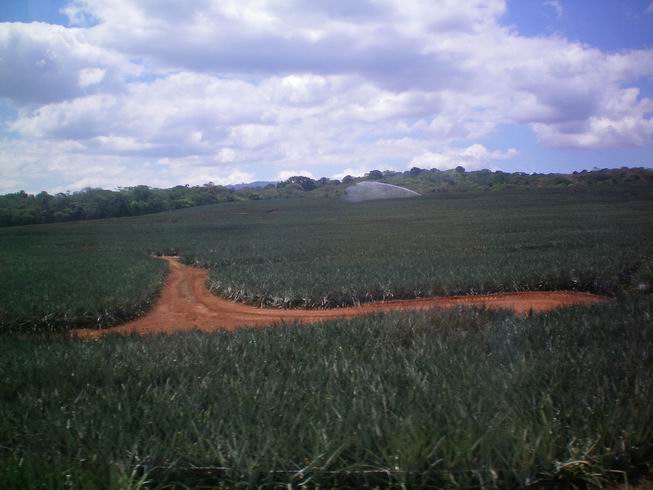
Miles of pineapple (Pina) fields in Panama.
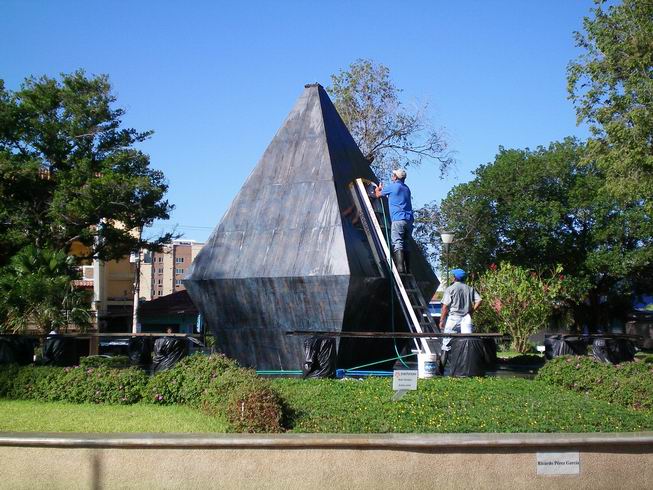
Central Plaze in David,(Dah-VEED) Panama. It is the second largest city in Panama and it seems to always be hot.
It is a great shopping town as everything seems to be available. Things are reasonably priced and in Panama the US
dollar is the local currency. We had a great hotel room(Hotel Castilla) for $45 a night. It was huge, bright, with a large bathroom
and all kinds of hot water. There were a few English TV channels. Taxis were very reasonable but as in most places
the driving is a bit crazy! There is also a huge bus station with all the companies using the same area which is nice
as so many places they are all over town and it can be a challenge to get to the correct one.
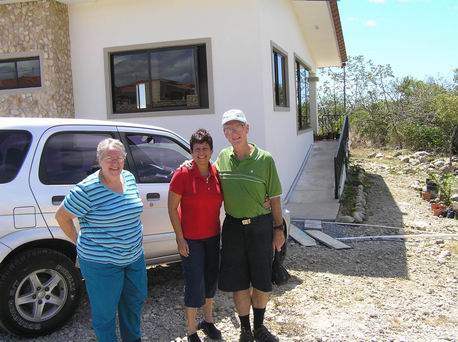
Louis and Yari Anciaux at the new house in famous Boquete. It is typically
ranked the number two place in the world to live for Expat's. With the long bus ride from San Jose and the border
crossing we got into David about an hour later than expected. I called Louis on the satellite phone and much to my
surprise there had come to David just to meet us so we had a wonderful supper together. I have known Louis for over
30 years and we have met personally a few times at radio meetings. We had never met Yari. Now if you want to have
a good time you need to visit with here and get her talking about her life with her gringo husband Louis. Gringo is
a good word in Central America.
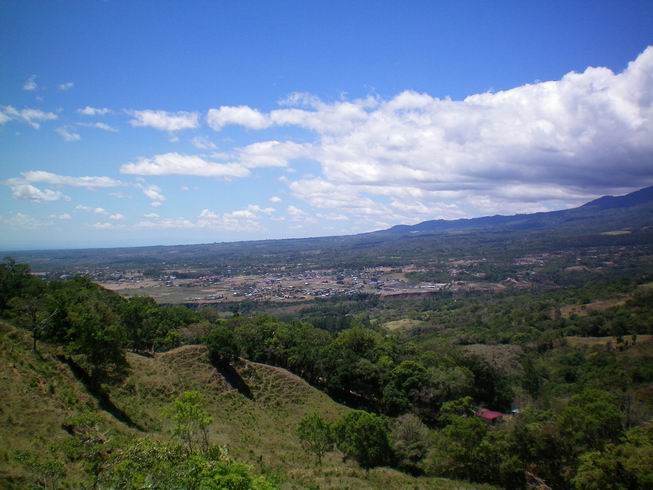
On Saturday morning Louis drove down to David and picked us up and took us to Boquette to stay. Yari had gotten
us rooms for Boquete the night before when we were eating. The picture at there new home is on Saturday morning. Yari got us
a hotel room in Panama City as that town is one of the toughest places in the world to get a room right now. The
original Boquete and present business section is in the valley but it has expanded out. Most of the expansion is where
people live. At 5000 feet and higher it is very pleasant and there is some $100 a pound coffee grown at the higher
elevations. They have a rain called bajarique which often times does not hit the ground. It is quite a sight! Of course
during the rainy season; especially September and October is rains a lot. The annual rainfall is about 160 inches a
year.
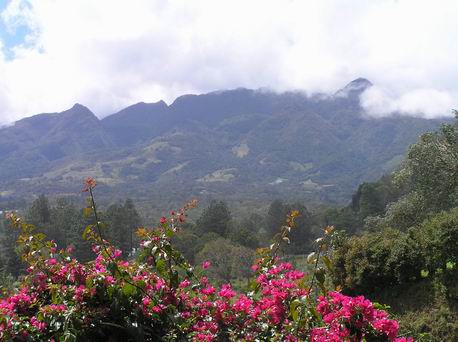
Another view of the mountains by Boquete. We spent all day Saturday touring with Louis and Yari and had a
fantastic time. We had some of the famous coffee and a great visit about some of the various parts of the world
we had both been in.
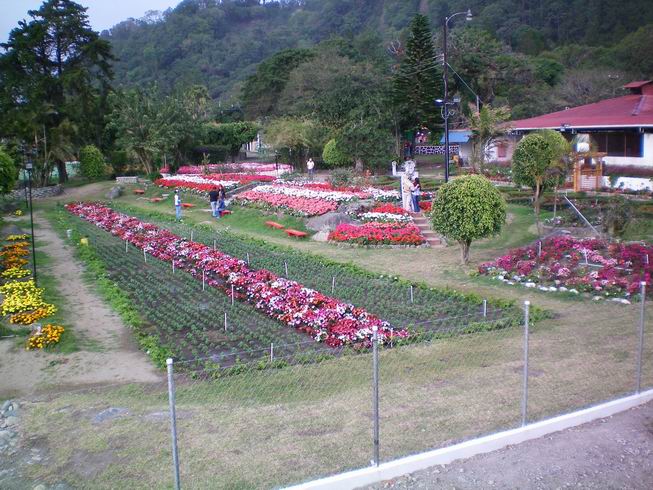
The fair grounds in Boquete. There had been a very serious flood last fall. It seems on of these happens about
every 40 years.
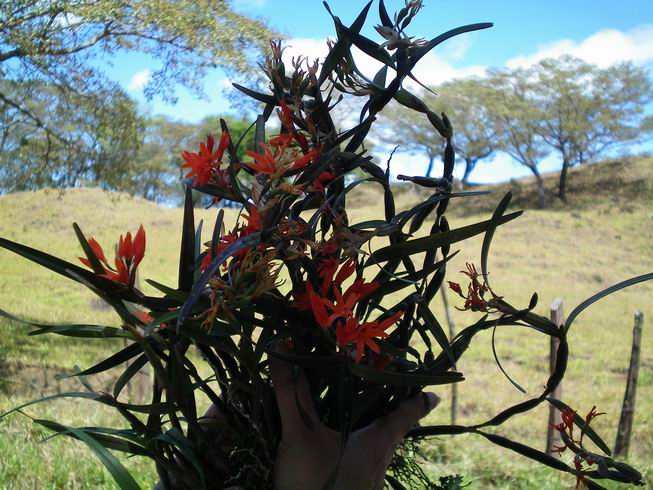
Orchid and Motmot hunting in the back country high above Boquete with Louis and Yari. Do a search for the Motmot
bird. I seen two in Costa Rica and they are often sighted here but not today!
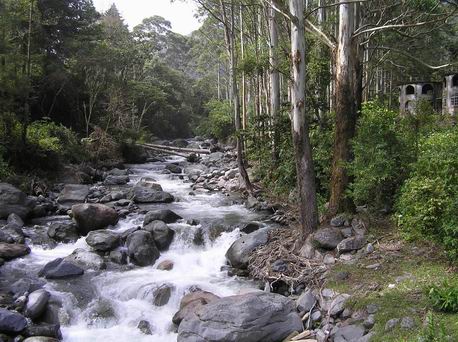
The river that runs down the valley and through Boquete and an abandoned hotel which would be fabulous in the
jungle but the owners don't want to sell.

We spent two glorious days touring and living in Boquete. We attended church with them and ate a great Peruvian
meal. Here are some birds where we stayed at the El Oasis.
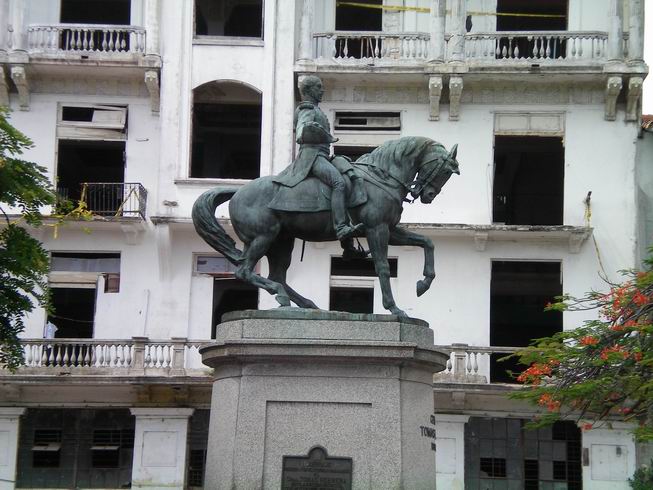
Read the travelogue on the long trip to Panama City and lining up tours. I know you will find it interesting.
Here is a statue picture on the city tour which was lead by Jesus Prestan. www.panamacitytours.com or www.aaaecotravel.com
He can give you a private tour in his new car with a great commentary and great English, answer all your questions and will flex things if
something comes up. For example I wanted a map and we went to the head map place(Panama Cartography office and got
one.
House of Noriega. Manuel Norieag is a former Panamanian general and military
dictator of Panama from 1983 until 1989. In 1989 the US invaded Panama and detained him as a prisoner of war and flew
him to the USA. He was tried on eight counts of drug trafficking, racketeering and money laundering in April 1992.
France and Panama are trying to extradite him. He presently is still in prison in the US. Noriega was an agent
for the CIA and the whole affair is considered by many to be one of the biggest US blunders in foreign affairs. Our
guide Jesus said a few months ago people were busy cleaning up the estate but the extradition attempt failed and the
work stopped
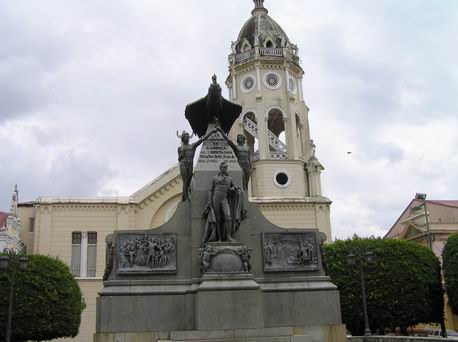
Simon Bolivar famous as a liberator in South America.
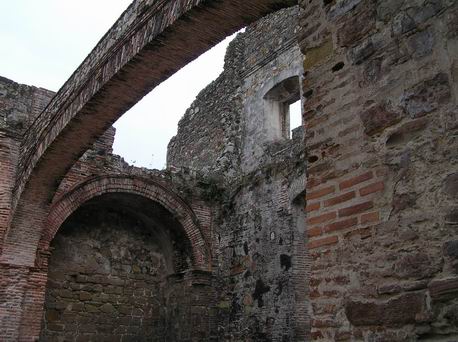
This monastary supposedly played an important part in the Panama Canal being where it is at since it is in
the second location of Panama City which is centureis old and close to where the entrance to the Panama Canal is. The fact that the bricks
had been there for centuries was an effective arguement that the canal was not going to be subject to severe
earthquakes.
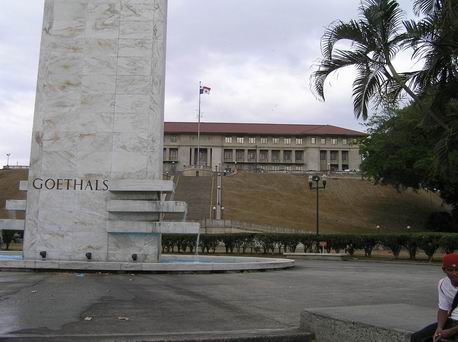
The Panama Canal headquarters building. Goethals was the army engineer who was in charge of the most successful
engineering of the canal.
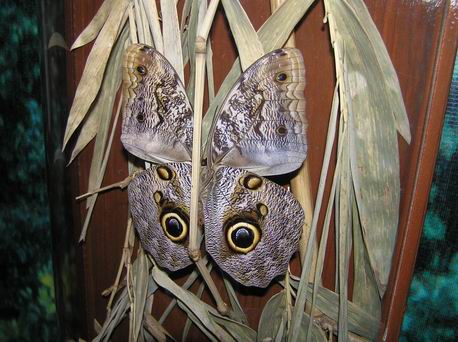
An Owl butterfly found in the area around the Panama Canal. This pattern helps keep preditors away.
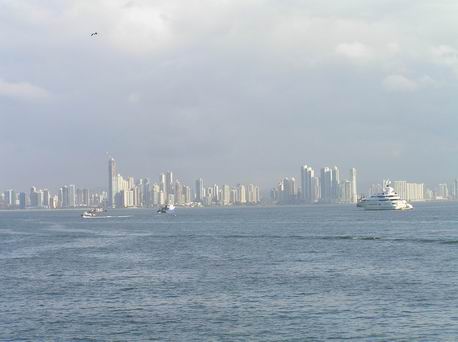
Modern Panama City noted for its secure, private banking system.
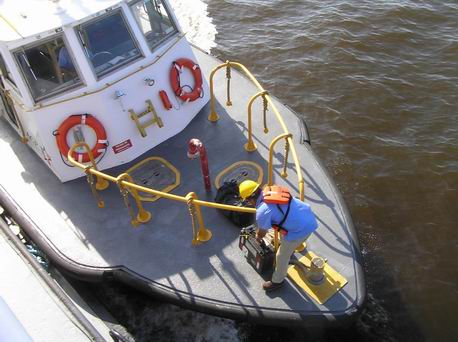
Our Panama Canal pilot getting on our boat on our Panama Canal passage. No boat can enter the Panama Canal
without a canal pilot on board and in control.
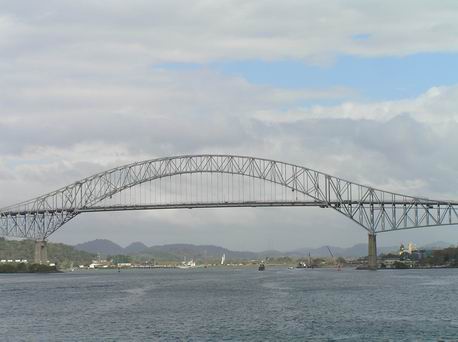
Bridge of the Americas which used to be the only bridge over the canal but now there is a second one. It is
at the Pacific entrance.
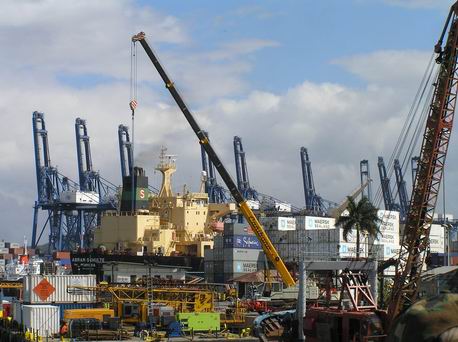
Container loading from and to ships from the railroad that goes along the canal giving another option. There will
soon be a highway along the canal giving the option of trucking but I have a hard time seeing how that would be better
than the railroad other than some unusal situation.
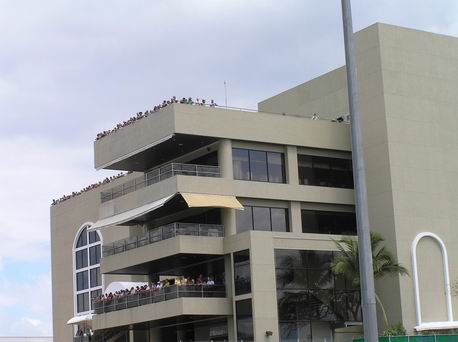
Miraflores Locks visitors museum and observation deck. We toured the museum and took pictures from there the
day before and some of those are on the web site as well. It is definitely worth going to and if you don't have
time to take the boat tour or want to spend the money it will give you a good knowledge of the canal.
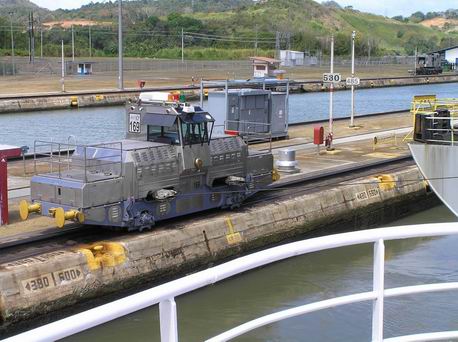
The electric mule keeping the large boat centered in the canal. There is another mule on the other side of
the boat. These big boats respond very slowly when trying to turn so there is no way they can control it with these
close tolerences. In fact they can not even control it enough to get it into the locks without the required tug
boat.
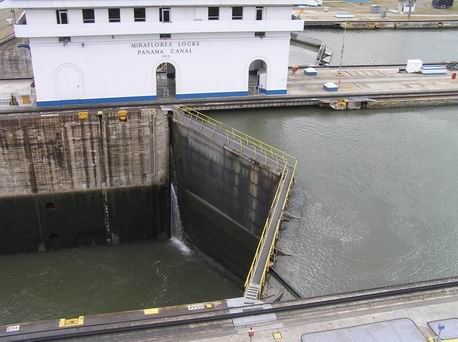
Photo from the observation deck showing the lock gate. The travelogue and e-mails have a great deal of information
on the working of the Panama Canal.
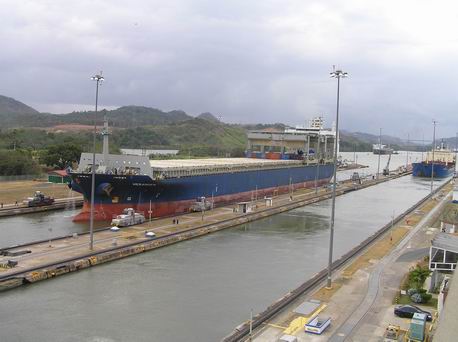
Large boats in the canal. Generally in the morning both lanes are used to go north and in the afternoon
south. Note The country of Panama runs basically east and west, not north and south.Orchid and Motmot hunting in the back country high above Boquete with Louis and Yari. Do a search for the Motmot
bird. I seen two in Costa Rica and they are often sighted here but not today! It changes again at night as the canal
operates 24 hours a day. The expansion will add a wider lock in the background of this picture about 1/4 of a
mile away.
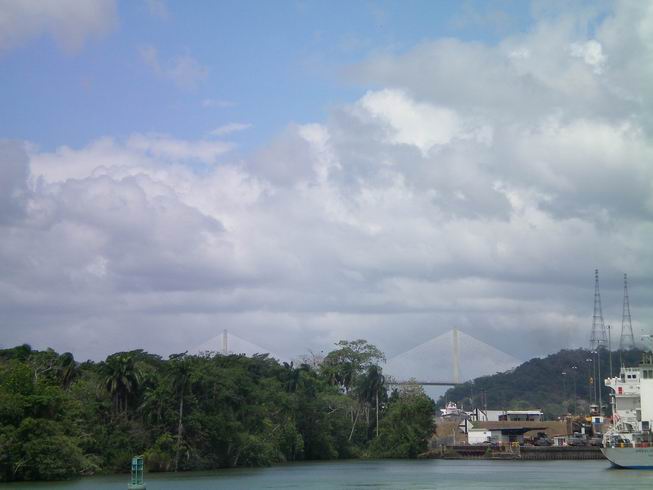
We are though the first lock which has two lifts and headed for the Pedro Miguel lock. Here is the second bridge
across the canal. http://en.wikipedia.org/wiki/Panama_Canal_Locks is a good link for information on the canal. If
the link is broken just do a search for Panama Canal locks.

Double gates. Here is a good link for more information on the canal. http://www.danallen.com/blurb.php?dogNow=720
If the link is broken just do a search for panama canal gates.
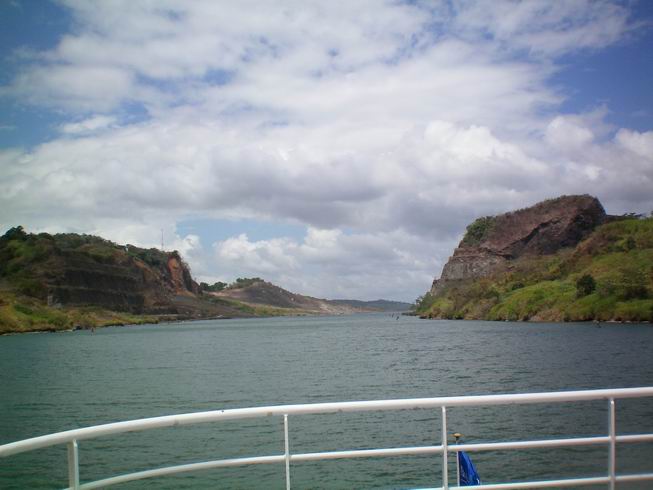
The famous Gaillard Cut which even with the canal expansion will just be widened rather than another cut made.
Lots of tragedy here. When the French were trying to build the canal they put out a rumor that the hill on the right
side had gold to try and get more share buyers, hence it is call Gold Hill. On the left is Contractors Hill.
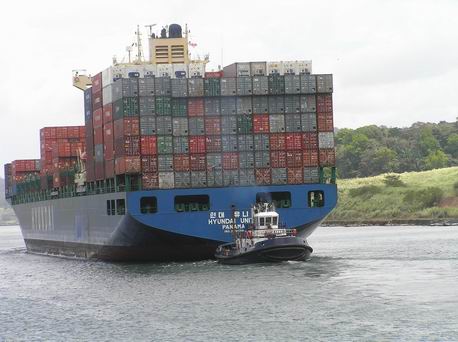
A big Panamex container ship. Hyundai is the biggest company in container ships. .
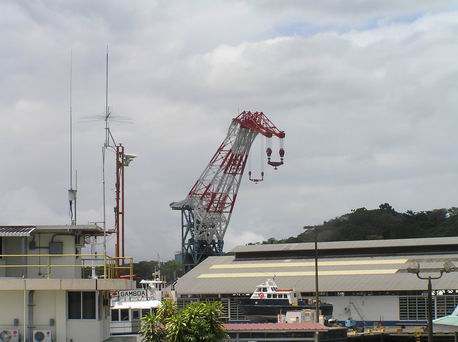
Big "Herman the German" crane used to work on the gates in the locks.
The crane, US Navy designation YD-171 was one of three taken after WWII from Germany. Largest floating craines in
the world at the time. Of the three cranes only one survived to be put in service. The Russians disassmebled theirs
to transport and never could figure out how to put it back together. The British decided to tow theirs across the
English channel where it sunk. The remaining crane was setup in Long Beach Naval shipyard and used until the shipyard
closed in 1997. It now belongs to Panama and is use to lift the lock gates out of the water for service.
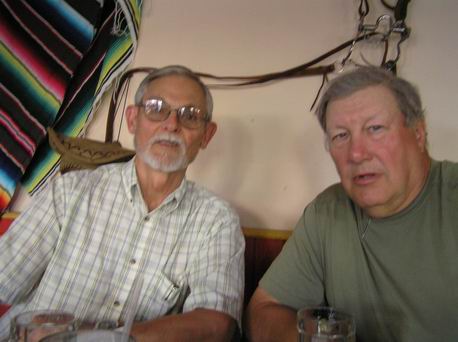
Jay HP3AK who was so helpful to us at Volcan. We also went with him and Bill HP3DX to a radio amateur gathering
at David and we went to Bill's for an evening. We used Jay's internet and looked at his professional photographs and
had some great visits. We were able to help him put up a "STEPPER" beam antenna. When we found out we needed to go
home for my Mothers funeral he brought us to David to catch the airplane. He waited around and sure enough we could
not fly out until the next day so he took us downtown to the La Cabilla hotel.
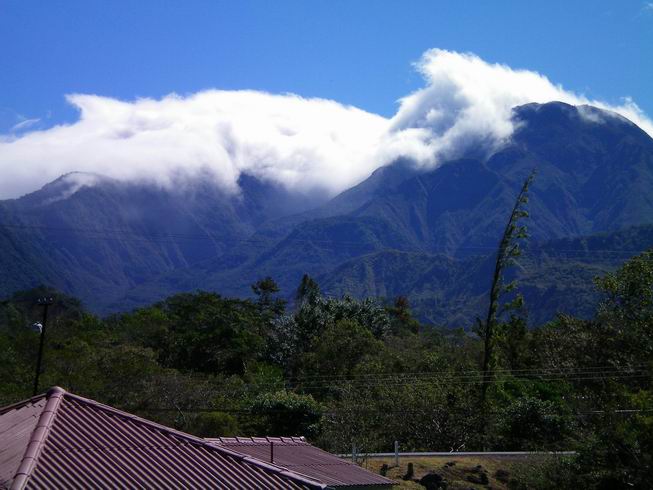
A view from Volcan. It is on the other side of Vocan Baru from Boquete which is the highest point in Panama.
Presently you have to go back to David and then come back north to go to either. There may be a 4 x 4 way but no
good road. It is my understanding they are in the process of building a cut across road. Volvan is a lot more laid
back than Boquete. I thing I would rather live in Volcan but both are nice.
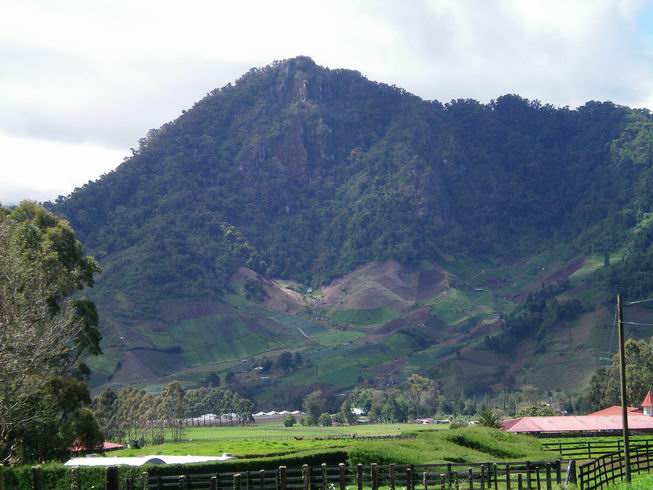
On up the mountain from Volcan. This area is called Cerro Punta. It rains more here and of course is cooler.
It is a very pretty area and of course things are more expensive.
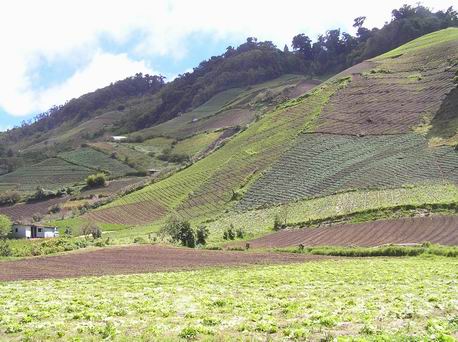
Mountain side fields at Cerro Punta. There is some great hiking in the
area from here by Volcan Bura to Boquete. There are some Quetzal birds in this area. Jay has seen a female one which
of course as not a colorful as the male. The trail is calle Los Quetzal.
link to To Main Retirement page of Ed and Edith














































































